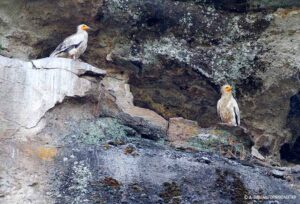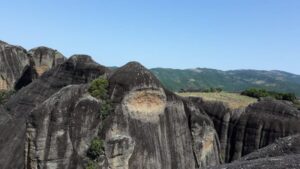A new generation of the Egyptian Vulture at Meteora
 We are happy to announce you that the first hatchling of the Egyptian_vulture (Neophron percnopterus) at Meteora is a fact!
We are happy to announce you that the first hatchling of the Egyptian_vulture (Neophron percnopterus) at Meteora is a fact!
After 42 days of patient incubation, the only pair of the Egyptian Vulture of Meteora saw their previous days of hard work being rewarded.
The first chick for 2018, for the region of Meteora, as well as for the whole Balkans, hatched!
Now, the Greek Ornithological Society is looking forward to seeing whether the next couple of days will have a second chick.
These small birds, cared so much by their parents, are a “treasure” for the nature and cultural heritage of the region, since they are the future settlers of the rocks of Meteora.

However, the charming arrival of the chicks marks the beginning of a difficult journey: once they get out of the egg, they will not leave their nest for more than two and a half months until they develop physically and get stronger.
Then, their first flight follows, a leap of “trust” from the nest, conquering the airspace for the first time.
Soon after their first flight, they may be following the greatest and most dangerous test of their lives: the first migratory journey to the South, where they will have to overcome the difficult Mediterranean barrier to reach Sub-Saharan Africa.
There, after having spent the first four years of their lives and are able to avoid various dangers such as electric overhead power lines, poisoning and poaching, they will return to the place they were born, hoping to find a mate and create their own chicks “filling” again with Egyptian Vultures the sky of Meteora!
The Egyptian Vulture, an ancient symbol of maternity and well-being, is now the most threatened bird of prey in Europe, endangered globally.
In Greece, there are only five couples remaining. But there is still hope that we will be able to keep this amazing bird for the next generation.
We should pay attention so, until the young return back to the place where they were born, we have fought the scourge of the poisoned baits that threaten the existence of this emblematic species.
Join us for the hiking tour to learn more about this magnificent bird and also to see the hidden face of Meteora!
Source: www.tameteora.gr



